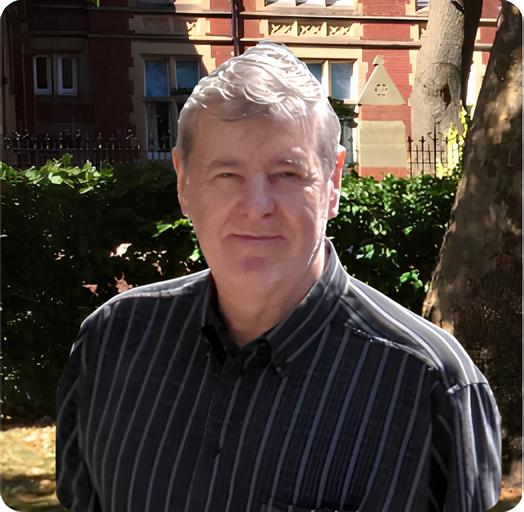A personal view of a British school researched by the author Stephen B. Fauguel Ph.D.
Within this research the school, the location and the people involved in the interviews will remain confidential.
I have carried out the research by conducting interviews with teachers at the school. The teachers’ interviews and the Ofsted Inspection Report help to measure the success of the teaching techniques that connect religious studies to citizenship.
Teachers Opinions on the agreed syllabus
The syllabus is varied however, 98% of the children in this school are Asians of Muslim faith and it is a difficult concept for very young children, (Foundation years 3-5 year olds) to grasp.
The children enter this school either with English as an additional language or unable to speaking English at all. The majority of the children’s culture does not lend itself to the encouraged learning of multi-faiths. However, the syllabus does meet the legal requirements. As the children are such a young age (Foundation stage) they are taught through example.
One example concerning baby Jesus at Christmas is explained by relating Jesus to the prophet Mohammed in the Islamic faith. The teachers also demonstrate the different festivals of other faiths by making models and carrying out craft activities.
A particular activity where the teacher creates diva lamps for Diwali the children do respond very well and enjoy taking part in the activity. The teachers also explain their own culture to the children.
The teachers will try to reach out to grasp the young children’s imagination and world view; they deliver the classes using concepts like Father Christmas and baby Jesus in nativity role-play. The children go home to an environment and culture where the different faiths in this country may not be mentioned. The children’s parents may talk about the different faiths to their very young children.
Reported in the interview
At Foundation stage there is a timetabled lesson plan and the children are taught the lessons in guidance with the National Framework/QCA. Although the very young age of the children now have little or no English language skills they do appear to accept that there are different concepts of faith and worship. Also the agreed syllabus does appear to basically conform to the condition set out in the framework National Framework/QCA.
The teaching does conform to the legal requirements and takes into account the specific needs of the borough. The school sometimes encounters intolerance of non-Muslim religions and it is important for the children to learn respect for other people’s religions. Further, they do understand that many of the central beliefs and values are held in common.
It’s difficult to convey abstract ideas to KS1 children therefore the teaching is based on stories, drama, looking at religious objects etc. The children respond well at the time. How much the children actually contain or remember in each particular taught session is unknown because the initial teaching of the religious curriculum may only lay the groundwork. The children especially enjoy the visits to places of worship. Teaching also includes the groundwork for tolerance and respect in the future as, the children are able to see different religions in a positive light.
The teachers follow the QCA documents, which meet with the local Syllabus. The teachers also add school based topics as the QCA documents only cover 4 x half terms per year. They plan a yearly programme of religious study for each year.
In summary the teachers states that although the syllabus meets with the legal requirements at Merry Meadows Primary School, the children’s “culture does not lend itself to encourage learning of multi-faiths.” At this school there is evidence of resistance to learning of Christianity. The teacher is responding to the children’s needs by explaining their own culture. The teachers also link the two prophets of Jesus and Mohammed to help the children understand other people’s points of view. I also note that it does meet with the National Framework at Foundation Stage.
Teachers collaborated with each other. In this case, the teacher tries to meet The Towns Locally QCA and acknowledges the legal requirement. They also take into account the specific needs of the borough of the Town. The teachers meet intolerance from KS1 children by helping the children to bear in mind that there are commonly held values.
In this way the teachers’ intention is to teach respect for other people’s religions to the children. There is also an inter-relation of subjects, examples being Art and Drama. It is here that the interrelated subject fulfils the requirements of the National Framework for the KS1 pupils at Merry Meadows Primary School.
The teachers also recognise that the children enjoy the trips out to places of worship. The teachers’ aspirations are to lay good ground work for tolerance as the children grow into adults. They underline this by teaching the different religions in a very positive light. The teachers agree that this follows the QCA guidelines for religious studies.
A summary of the above, Reported Interviews with Teacher (A)/Foundation Years Unit Leader, Teacher working with KS1 pupils, and a discussion of the opinion on the agreed syllabus.
In conclusion, throughout the research I have linked legislation to the National Framework, the QCA and the SACREs.
It reveals evidence of citizenship and social cohesion as elements promoted with religious studies at Merry Meadows Primary School for Foundation Stage and Key Stage 1 pupils.
I have carried this out by conducting interviews with teachers at the school and by examining Ofsted Inspection Report which describes Merry Meadows Primary School as a good school. The teachers’ interviews and the Ofsted Inspection Report help to measure the success of the teaching techniques that connect religious studies and citizenship.
Where possible, I have indicated points that might assist in social cohesion by using Bellah’s (1991) ideas on social religion. Taking all of these factors into account, I conclude that Merry Meadows Primary School’s teaching techniques in connection with religious studies foster the possibilities of citizenship. Therefore, it is possible to achieve a good standard of citizenship and could potentially help to bring a high level of social cohesion to the diverse people within the researched community.
References
Archer, J. (1999). The Nature of Grief The Evolution and Psychology of Reactions to Loss, ‘Interjection of Love Objects (1924). London: Routledge
Bellah, R.N. (1991). Beyond Belief; Essays on Religion in a Post-Traditionalist World. Berkeley: University of California Press [online] http://www.robertbellah.com/articles_5.htm
Bowlby, J. (1986). Attachment and Loss Volume 111 Loss, Sadness and Depression, Aylesbury: Pelican
Curzon, L.B. (1996). Teaching in Further Education, 5th ed. London: Cassell Education Limited.
DFE circular 1/94 para 31, Religious Education Reform Act (1996), Section 375/3.
DfEE/QCA, (1999). National Curriculum Handbook for Primary Teachers, Breadth of Opportunity for Citizenship.
Freire, P. (1996). Pedagogy of the Oppressed, 3rd ed. London: Penguin Books.
The Education Act of 1996 and 1998, (1998), Section 8.
The Education Reform Act (1996).
Wragg, E.C. (1997). the Cubic Curriculum Routledge, London: Routledge.
Stenhouse, L. (1978). An Introduction to Curriculum Research and Development, 4th ed. London: Heinemann Educational Books Ltd.
Vogyeski, (1978), Feinstenin, (1980), (Chiler (1996), scaffolding
http://www.teachernet.gov.uk/management
APPENDICIES
Appendix I | Working Party Membership Town and Local |
Appendix II | Access and Entitlement Town and Local Agreed Syllabus |
Appendix III | Ofsted Inspection Report |
Appendix IV | Local Agreed Syllabus for Religious Education |
Appendix V | National Expectations in Religious Education |
Thank you for reading this article.
Promote peace and you will serve humanity.

